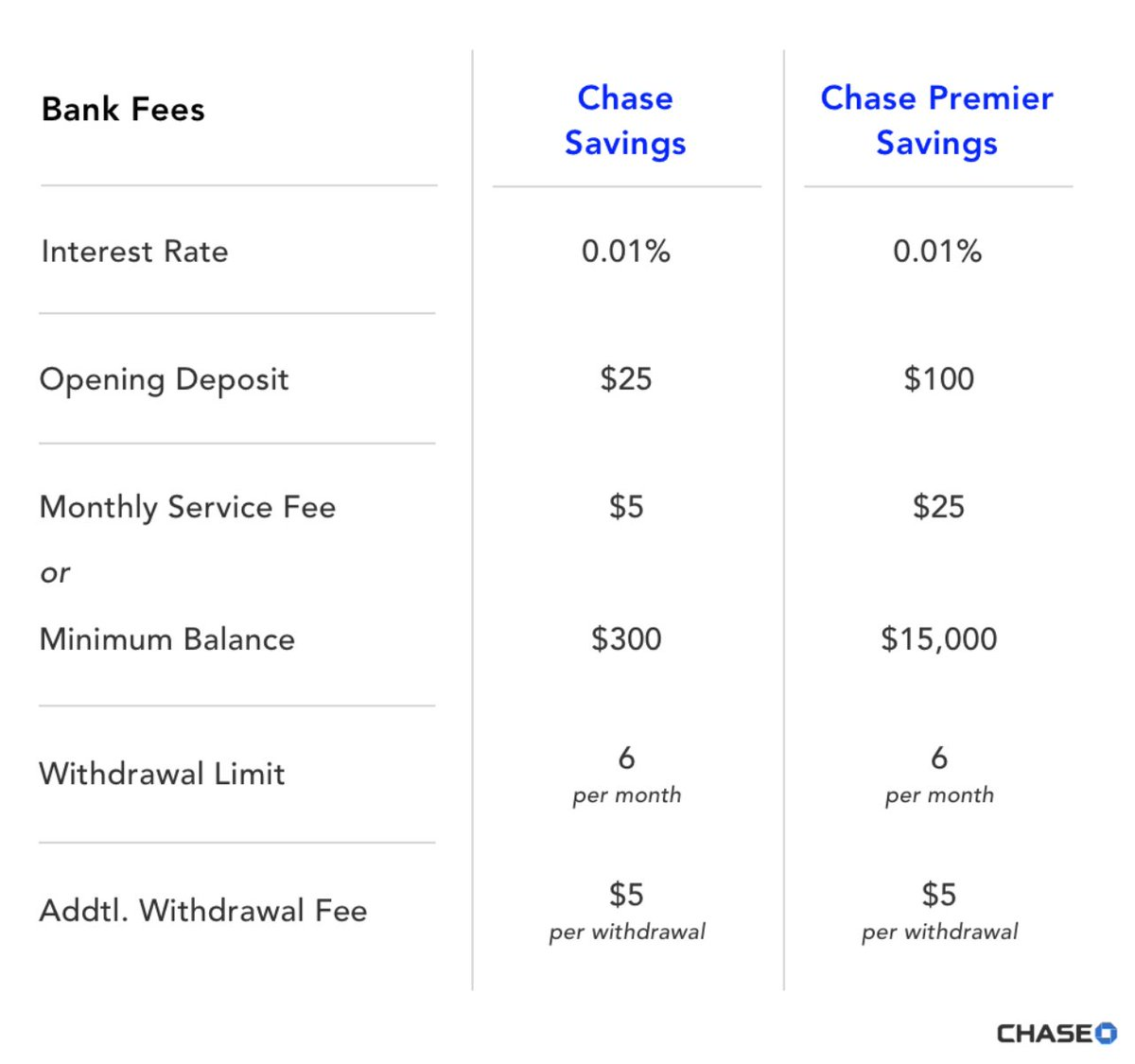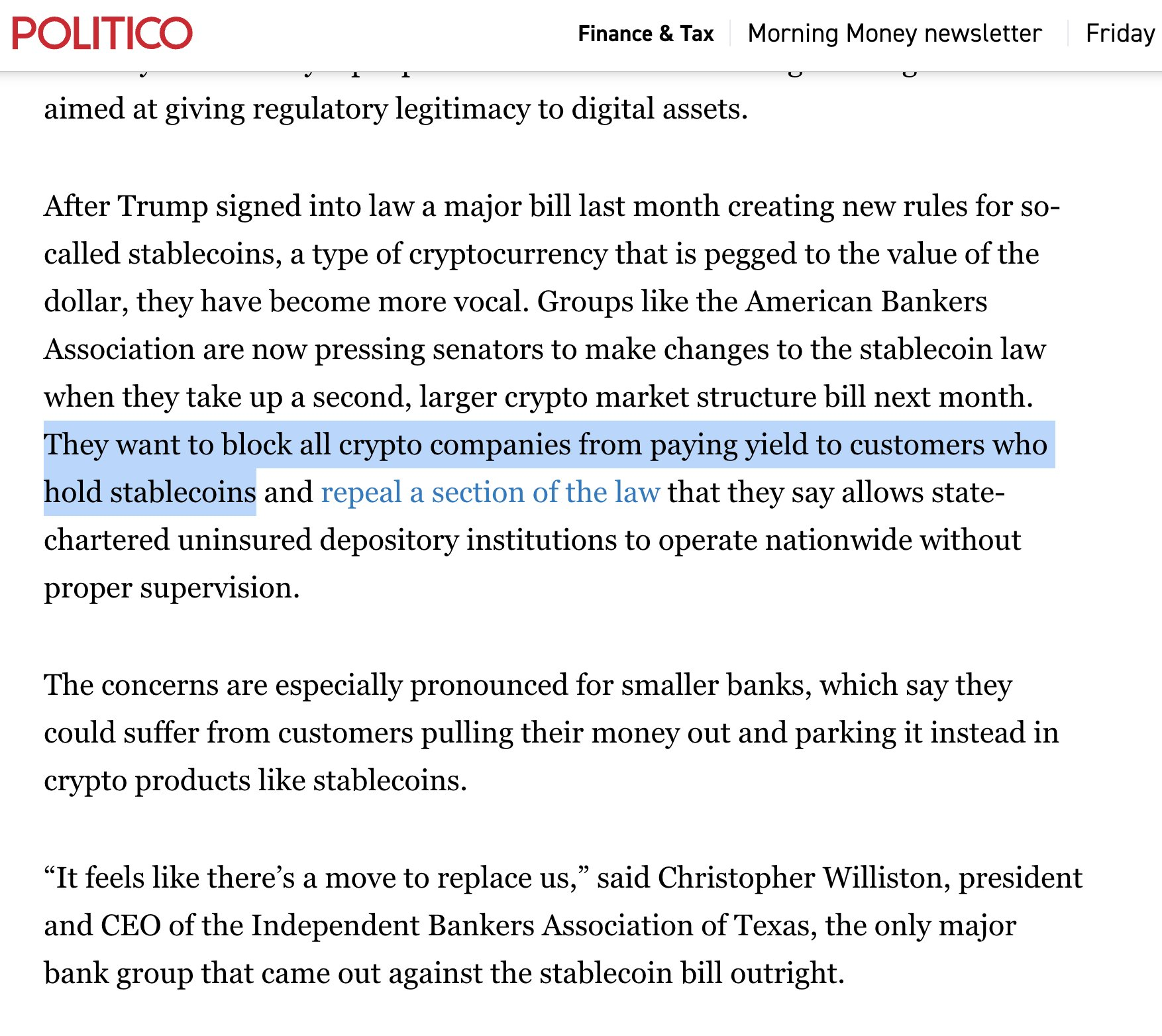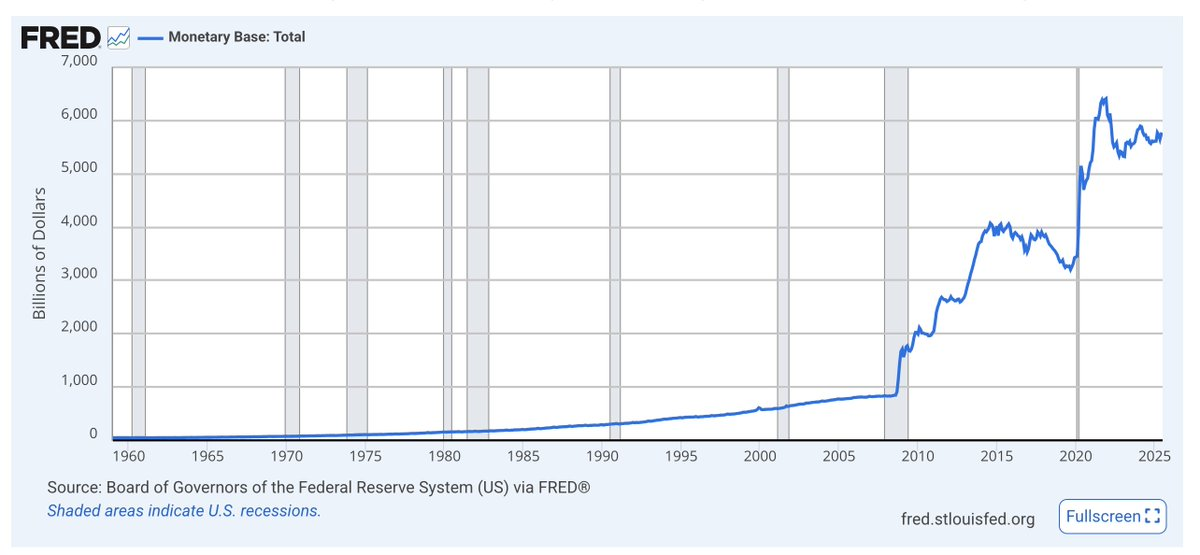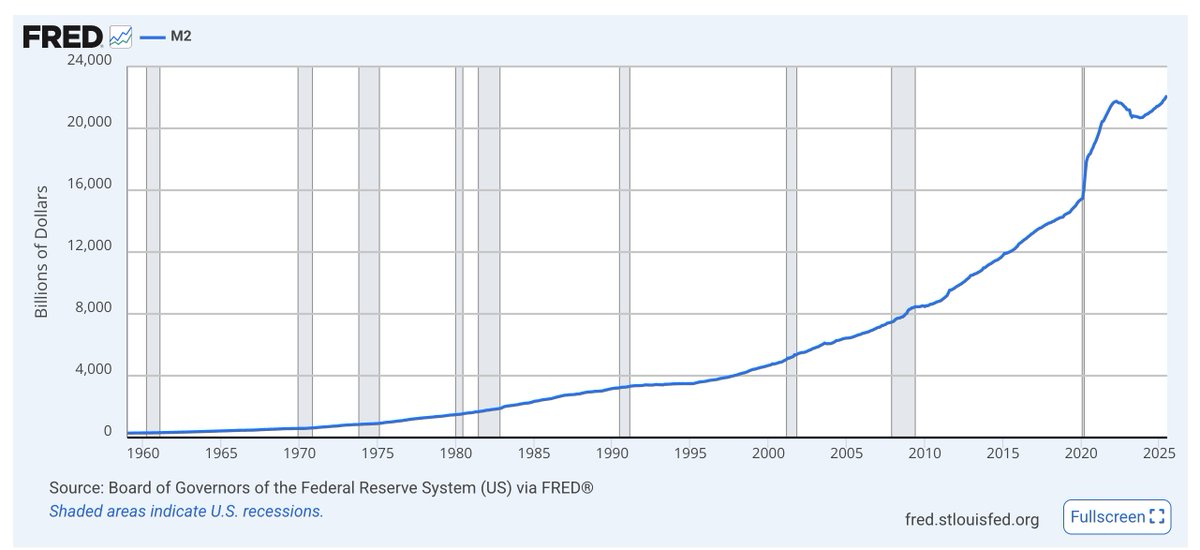Don't save your money in a bank
Dear Son,
Don’t save your money in a bank. It looks safe, but it’s a three-layer scam.
Scam 1: they steal your yield.
All dollars at all times actually have a risk free yield - they’re called treasuries. A treasury is just a dollar wrapped in a short-duration government bond that gets you a free 4.2% yield.
No additional risk. Free money. Literally printed for you.
But instead of giving you this money, in a savings account the banks keep it all. They don’t tell you about this yield. They don’t make it easy to wrap your dollars in treasuries. They actively lobby the U.S. government to prevent their customers from getting the yield.

They keep 4.19% yield and give you 0.01%. Enjoy those Premier Savings!
Wealthy people bypass the banks - they store their cash in treasuries not savings accounts. But the middle class and financially illiterate get their yield stolen daily by their friendly neighborhood bank and have no idea.

Bank Lobby making sure you can’t access the free money yields in crypto stablecoins either. They say spread FUD - without their rentseeking yield on savings account the entire financial market will collapse!
The yield number will change - that’s why you’ll have to watch what the Fed Chairman says, but as long as the yield is positive keep your dollars in short-term treasuries and money markets not bank accounts.
Scam 2: the yield isn’t real yield.
Now you’re ready for the next secret.
The yield isn’t real.
Because the 4.2% yield you think you’re getting right now isn’t replacing your purchasing power. It’s just “nominal yield”. That’s because every year the purchasing power of your dollar units are eroding. They call this inflation - it’s the expected outcome - even in good times - but amplified in bad times.
Previous 4 year of your real yield is more like this:

Yield from a money market account less CPI each year kinda sucks.
So you would have lost a lot more than you made two out of the last four years.
But it’s actually worse than this.
Because all the fake yield you’re getting is taxed as income.
Say your income tax is 20% - you pay that 20% on all the fake yield you’re getting first. So the real yield is actually more like this:

Before inflation tax you pay income tax - the cost of holding dollars is double taxation
Real yield is yield less inflation.
They want you to think inflation is a natural force of the universe like gravity or physics. It’s not - it’s a design of our modern government and central banking system.
Inflation is a tax - like other forms of tax. But this one they hide.
I know you don’t mind paying your share of taxes - public goods are important, you believe in the common good. But hidden taxes? A tax that hits middleclass savers trying to preserve their money into the future - how is that fair? You’re trying to get ahead - your family deserves better.
Learn from the wealthy: they avoid the savings tax by holding the bulk of their wealth in assets, not dollars. Which brings us to the third and most insidious of the nested scams.
Scam 3: the money isn’t real.
Ok I’m slightly overstating it. Dollars are real. They’re just temporal things. Good for short-term payments, not good for porting your wealth across time and into the future. They’re a medium of exchange, not a store of value.

Base Money supply - they call it M0 - this is physical cash and bank reserves. Look how it spikes up during times of crises. The trend is UP.
Dollars don’t have long-term enforced scarcity. The dollar supply is constantly increasing, expanding. Your share of total dollars is decreasing at a far faster rate than your yield can replace it, because they keep increasing the supply.
The amount of dollar supply - the issuance - that’s almost never mentioned. Economists focus on inflation and purchasing power. But increased money supply erodes the value of dollars relative to assets over the long run. The more dollars they issue, the less you own.

M2: M1 + near-cash savings → also crises spikey and TRENDLINE UP UP UP
Don’t get wrapped in the economists debate about this - look at the charts for yourself. Governments will issue dollars as an economic and political lubricant regardless of who’s in power. That’s what dollars are for. Dollars aren’t for saving.
Look at the blue line in this chart.

-The S&P500 - the world’s most productive capital market increased 6,339% since 1971 as measured in dollars. But as measured in gold - a durable store of value asset with fixed supply - as measured in gold the S&P500 lost -21%.
You would have been better off storing wealth in gold the past 54 years than storing it in America’s 500 largest and best performing companies.
This chart isn’t telling you to buy gold. It’s showing you that the thing they call money, the thing everything in our world is denominated in, the dollars in your bank account, that’s not fully money. It doesn’t store value. It hasn’t for some time and it won’t into the future.
The money they call money isn’t a store of value.
So that’s the three-layer nested scam.
Scam 1: they steal your yield.
Scam 2: the yield isn’t real yield.
Scam 3: the money isn’t real.
So what do you do instead?
Keep dollars for short-term obligations - daily living, taxes, an emergency fund. Collect yield in the form of treasuries.
Keep all your long-term wealth in a portfolio of assets that will store your value across time - stocks and real estate are fine but, but also bitcoin, ether, and some gold. The latter three have scarce supply and cannot be inflated. These assets seem risky because they’re volatile, but volatility is not risk. Ride out the volatility.
Keep some medium-term wealth in treasuries too - when your long-term store of value assets dip in price, deploy your cash back into these. This is the art of investing - Buffet said it well, be greedy when others are fearful and fearful when others are greedy. There’s no rush to deploy, wait for big dips, think in years and decades.
Do as much of this as you can using crypto tools and exchanges. Avoid the bleeding edge risk, stay a step or two behind. This will keep you on the frontier as cryptocurrency disrupts traditional finance.
They won’t teach you any of this in school.
Learn it anyway. Build on it. Protect your future.
But don’t save your money in a bank. Save in assets. Save in crypto.
Disclaimer:
- This article is reprinted from [RyanSAdams]. All copyrights belong to the original author [RyanSAdams]. If there are objections to this reprint, please contact the Gate Learn team, and they will handle it promptly.
- Liability Disclaimer: The views and opinions expressed in this article are solely those of the author and do not constitute any investment advice.
- Translations of the article into other languages are done by the Gate Learn team. Unless mentioned, copying, distributing, or plagiarizing the translated articles is prohibited.
Related Articles

Solana Need L2s And Appchains?

The Future of Cross-Chain Bridges: Full-Chain Interoperability Becomes Inevitable, Liquidity Bridges Will Decline

Sui: How are users leveraging its speed, security, & scalability?

Navigating the Zero Knowledge Landscape

What is Tronscan and How Can You Use it in 2025?
